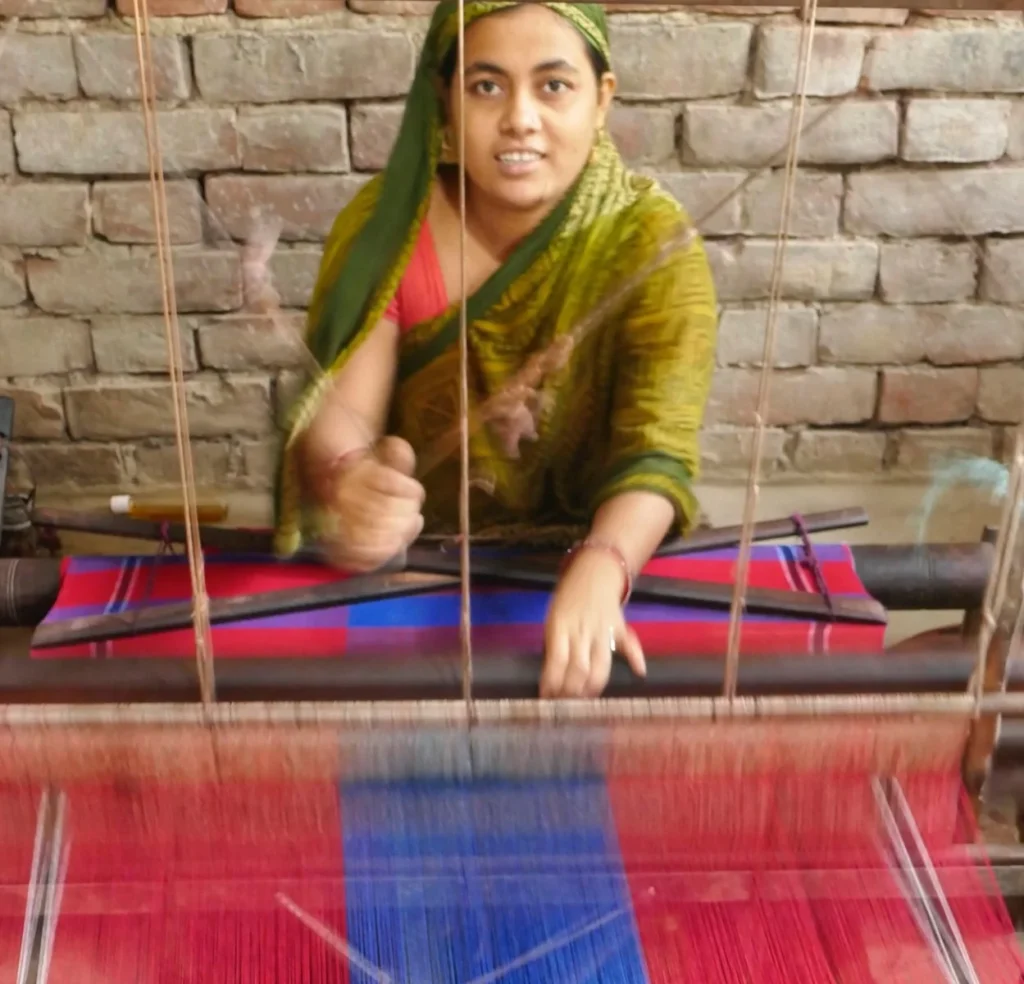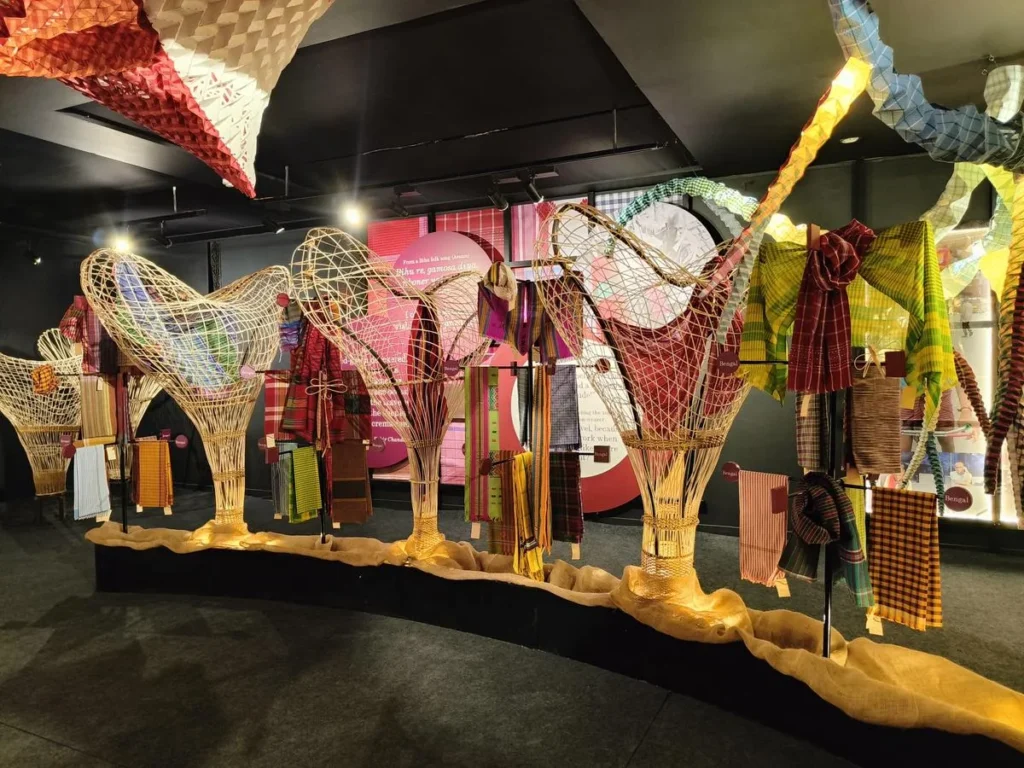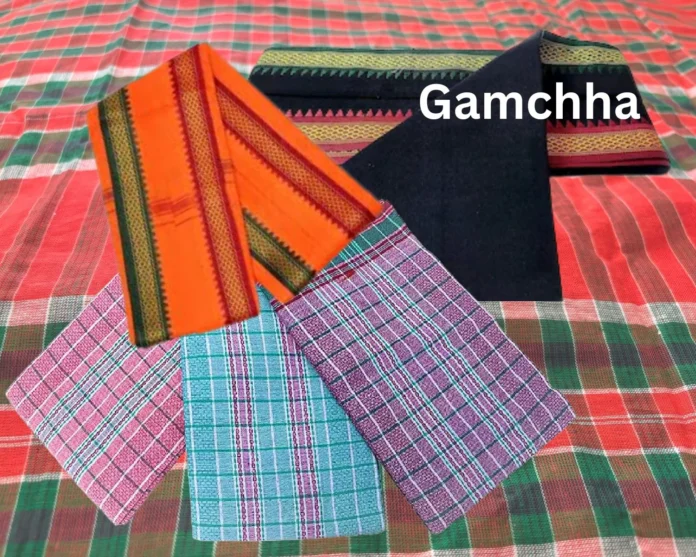The Versatile Gamchha: A Cultural Icon of Utility, Resilience, and Reinvention
The gamchha has long been an integral part of daily life in India, serving various functions, from a simple handkerchief to a multipurpose fabric that acts as a towel, scarf, garment, or even an improvised baby hammock. Recognized for its checkered cotton patterns, this humble cloth is synonymous with the working class and remains indispensable in the warm and humid regions of Bangladesh, Bengal, Bihar, Odisha, Andhra Pradesh, Telangana, Karnataka, Tamil Nadu, and Kerala.
Whether it is used to wipe sweat, draped over shoulders for comfort, or wrapped around the head as protection against the sun, the gamchha exemplifies both necessity and identity. It is not just a textile; it is a cultural artifact deeply woven into India’s social and economic fabric.
A Testament to Tradition, Identity, and Utility
The significance of the gamchha has been highlighted in Gamchha: The Extraordinary in the Ordinary, a multimedia exhibition curated by Dastkari Haat Samiti (DHS). This initiative sheds light on the fabric’s role as both a functional textile and a symbol of perseverance among India’s laborers.

DHS has had a longstanding engagement with this fabric. In 2015, it commissioned women weavers from Phulia, West Bengal, to create 100 gamchha saris as part of an effort to elevate its status in textile arts. Jaya Jaitly, president of DHS, regards this fabric as the “Swiss Army knife of the fabric kingdom” due to its adaptability across different roles and regions. Whether seen tied to an auto-rickshaw, draped over the shoulders of farmers, or used as a protective cover by construction workers, the gamchha’s versatility knows no bounds.
The Gamchha’s Rise to Prominence in Contemporary Discourse
The COVID-19 pandemic unexpectedly propelled the gamchha into the spotlight. As migrant laborers traveled back to their hometowns, the fabric became an emblem of their struggle and resilience. This growing visibility led DHS to embark on a nationwide search for the different versions of the gamchha, eventually collecting 400 unique variants, of which 230 are now showcased in the exhibition. These pieces are meticulously mounted on bamboo and cane structures crafted by National Award-winning artisan Vivekanand Bagchi.
Diverse Regional Variations: A Glimpse into India’s Textile Heritage

While the most common perception of the gamchha is its checkered design, regional adaptations showcase a stunning variety in colors, weaving techniques, and ceremonial applications:
- Tamil Nadu: Locally referred to as thundu, these versions are characterized by smaller checks and are available in hues of red, orange, grey, and mustard.
- Odisha: Known as gamocha, these fabrics exhibit the influence of ikkat weaving techniques, lending them a distinct appeal.
- Karnataka: Called haigal meli, the fabric remains a staple among laborers, though wearing it outside this context can be met with teasing due to class-based stereotypes.
- Kerala: Here, the white thorthu towel serves a similar function, featuring a unique motif known as chutty, which signifies the end of one towel and the beginning of another.
- Northeast India: The fabric takes on diverse forms, including gamphan (Mizoram), innaphi (Manipur), risa (Tripura), shamla, khamti, and ziro (Arunachal Pradesh). Meanwhile, the Assamese gamosa, predominantly in red and white, plays a pivotal role in traditional ceremonies and the iconic Bihu festival.
The Gamchha as an Artistic and Cultural Installation
The exhibition curated by Suparna Bhalla of Abaxial Design presents creative interpretations of the gamchha, reinforcing its relevance beyond its conventional use. Notable installations include:

- Gamchhas in the Sky, created by origami artist Ankon Mitra, features suspended paper-folded representations of the “working man’s towel.”
- A Historical Timeline of Gamchha, conceptualized by Avishek Mandal, founder of Rias Jaipur, uses suspended weaving shuttles and warp threads to symbolize the passage of time. This installation is complemented by a playing transistor, evoking the nostalgia of a gamchha weaver’s daily life.
Evolution into Fashion and Contemporary Design
In recent years, it has found its way into mainstream and high-fashion collections. Brands such as 145 East, Bihart, and péro by Aneeth Arora have reimagined the textile by incorporating it into modern apparel, accessories, and even jewelry. While these adaptations have elevated the fabric to a global audience, concerns remain about preserving its essence. Jaya Jaitly warns against the fabric’s commodification, likening it to high-priced jeans with pre-made tears, emphasizing that ethical sourcing and respect for laborers must remain priorities.
Sustainability and the Role in Ethical Fashion
As conversations around sustainable fashion gain momentum, the gamchha stands as a prime example of eco-conscious clothing. Traditionally handwoven, it requires minimal water and energy compared to synthetic textiles. Supporting gamchha production means investing in artisan-led, environmentally responsible fashion that prioritizes durability over disposability. The resurgence of the gamchha also offers an opportunity to revive declining handloom industries while fostering employment for rural weavers.
Preserving the Legacy for Future Generations
The ongoing exhibition at National Crafts Museum, Pragati Maidan, New Delhi, runs until March 10, offering visitors a chance to explore the gamchha’s historical, artistic, and contemporary significance. Beyond its humble everyday role, this fabric embodies resilience, cultural identity, and the spirit of India’s working class.
By recognizing the gamchha’s heritage and ensuring ethical reinvention, society can honor not just a textile but an enduring tradition that continues to shape lives across generations.


